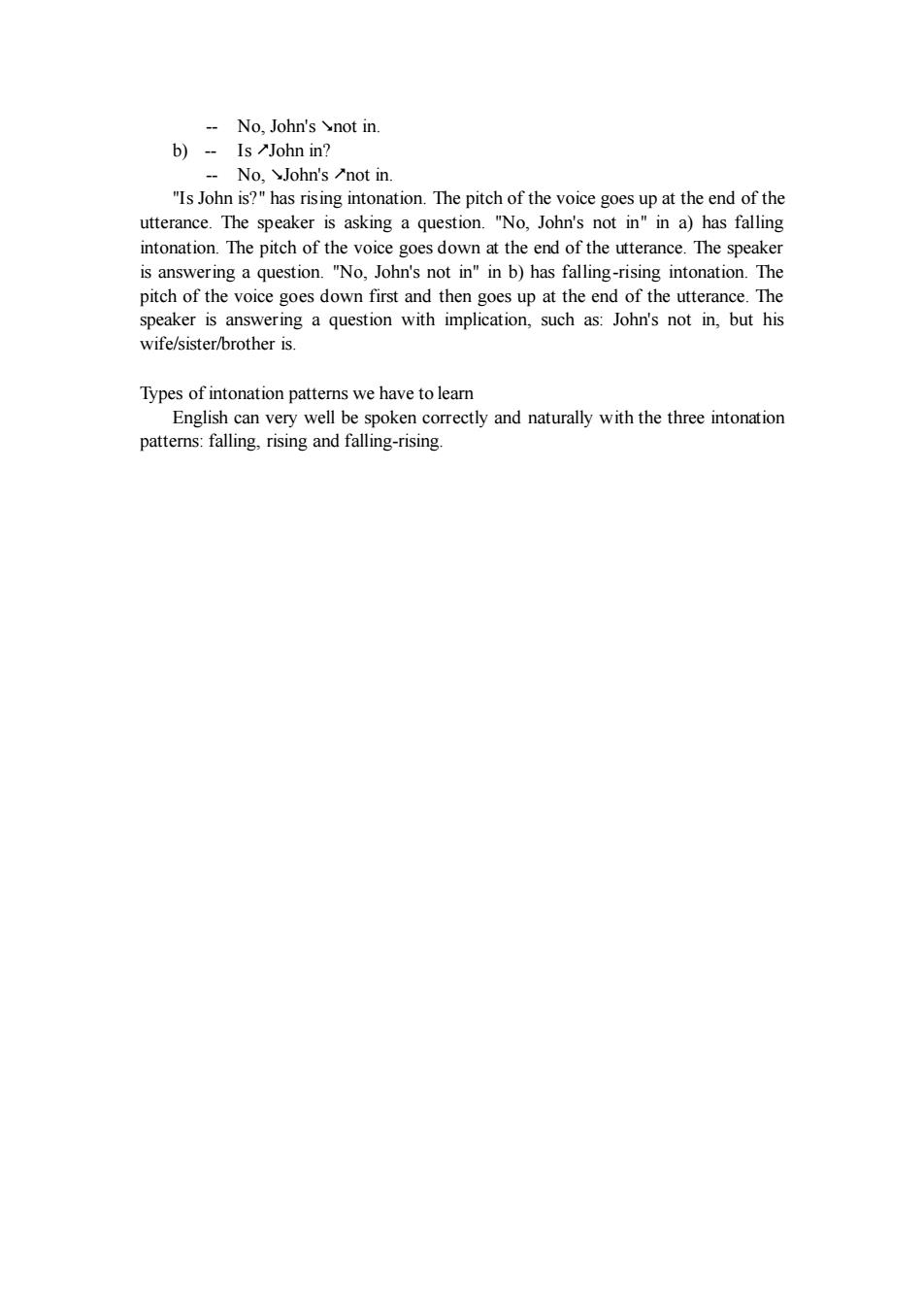正在加载图片...

-No,John's vnot in b)-Is/John in? No,John's /not in "Is John is?"has rising intonation.The pitch of the voice goes up at the end of the utterance.The speaker is asking a question."No,John's not in"in a)has falling intonation.The pitch of the voice goes down at the end of the utterance.The speaker question.No.o 's not in"in b)has falling sing intonation.The pitch of the voice goes down first and then goes up at the en the utterance.Th speaker is answering a question with implication,such as:John's not in,but his wife/sister/brother is. Types of intonation pattems we have to leam English ean very well be poke correctly and naturally with the three intonation pattems:falling rising and falling-rising - No, John's not in. b) - Is John in? - No, John's not in. "Is John is?" has rising intonation. The pitch of the voice goes up at the end of the utterance. The speaker is asking a question. "No, John's not in" in a) has falling intonation. The pitch of the voice goes down at the end of the utterance. The speaker is answering a question. "No, John's not in" in b) has falling-rising intonation. The pitch of the voice goes down first and then goes up at the end of the utterance. The speaker is answering a question with implication, such as: John's not in, but his wife/sister/brother is. Types of intonation patterns we have to learn English can very well be spoken correctly and naturally with the three intonation patterns: falling, rising and falling-rising